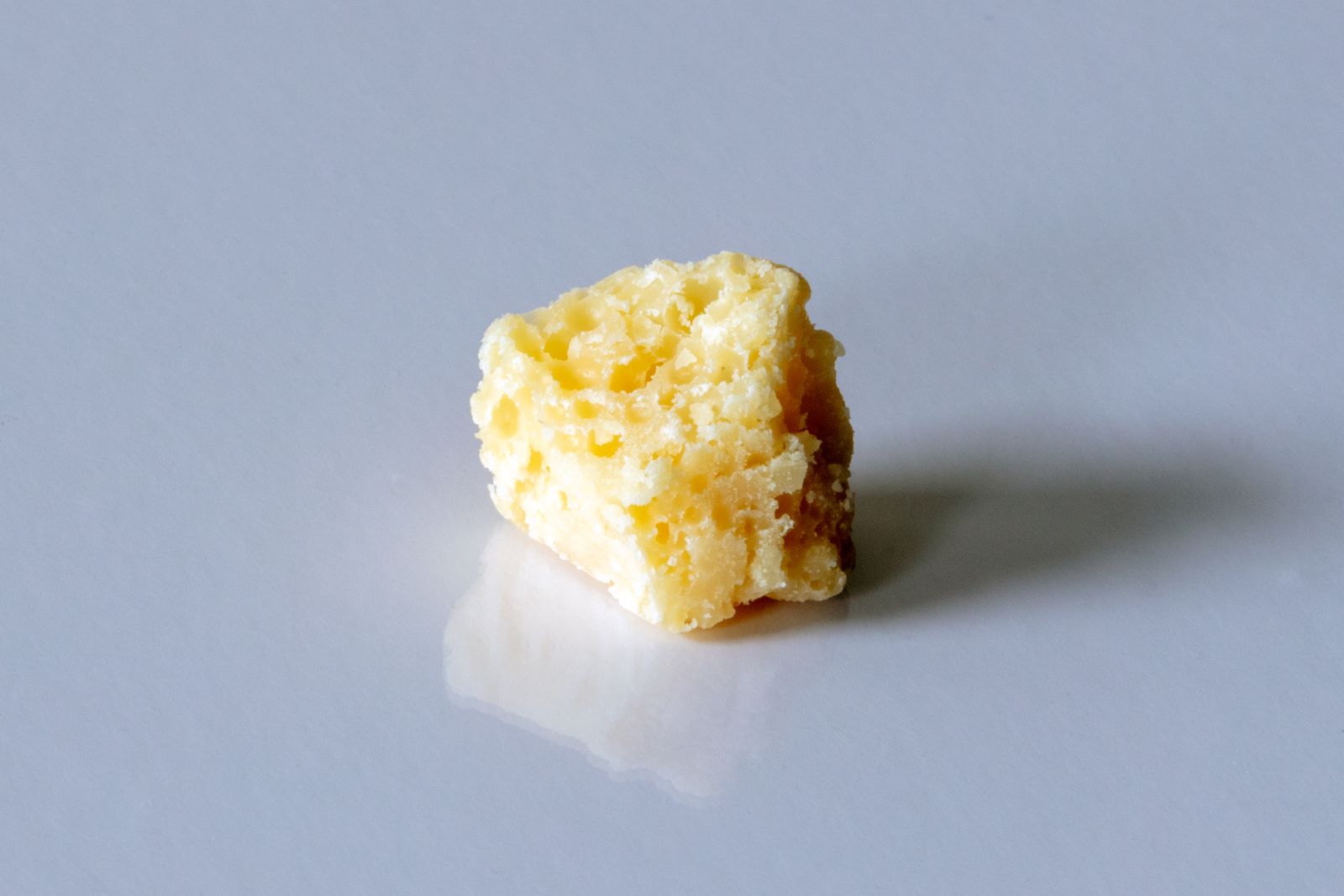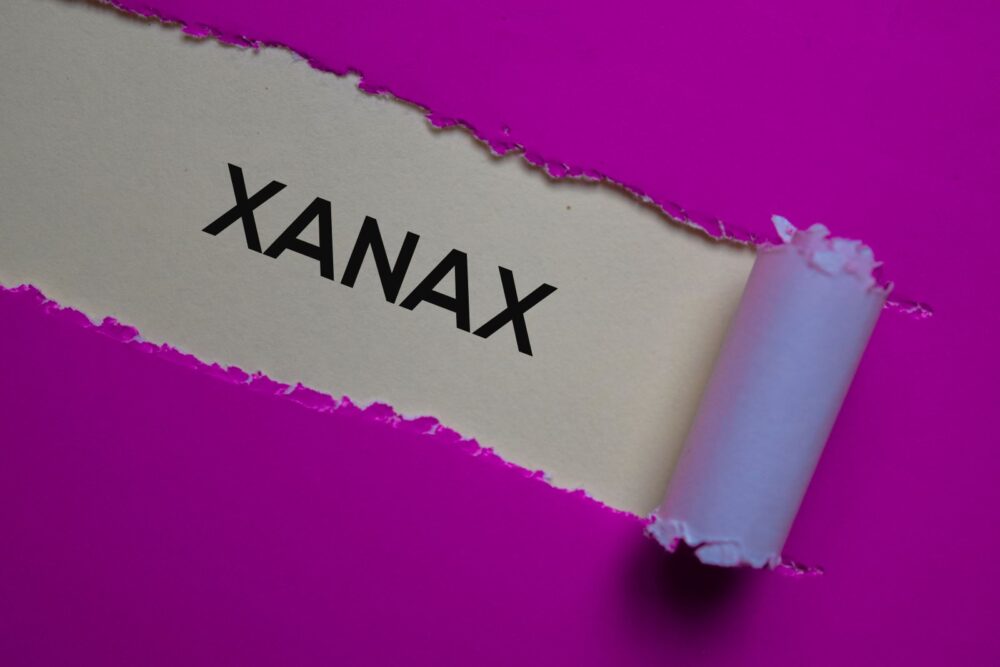Table of Contents
Have you ever wondered what crack is? You may come across it in movies or TV, books, or through friends and family. But what exactly is it?
Crack is cocaine in rock or crystal form and is an impure type of cocaine. When in rock form, it’s typically smoked, while powder is snorted, or liquified and injected. Most often, crack is combined with additives such as baking soda.
Due to the low cost to acquire it, crack is often a drug of choice among people with substance use disorders.
Crack Drug Facts
Crack cocaine is harvested from the coca plant. It’s usually made in South America – in the countries of Columbia, Bolivia, and Peru. It’s then smuggled to the United States and other parts of the world.
Hydrochloride salt and the “freebase” are the two forms of cocaine that are available. Cocaine is converted into its water-soluble, crystalline powder, which decomposes when heated by dissolving the alkaloid in hydrochloric acid. The street name for cocaine made from cocaine hydrochloride is “crack.”
What is the Difference Between Crack Cocaine and Cocaine?
The main difference between them is that cocaine is a powder, while crack is a rock.
Cocaine is typically snorted or injected, whereas crack is smoked using a glass pipe.
The effects of crack happen instantaneously, while cocaine might take anywhere between 3-5 minutes to set in. Cocaine tends to be more expensive than crack, earning it the label “rich man’s drug”.
Compared to cocaine, crack carries a larger risk of dependency. Many users of crack endure cycles of binging and crashing because the effects are more transient[1].
Crack and cocaine have some differences, but they often have similar effects. However, there’s a high risk of addiction with both.
What Crack Looks Like
Crystals, or “rocks,” are created during the crack cocaine manufacturing process. These come in various shades, including opaque white, off-white, and yellow. Their size and shape vary.
Crack may sometimes be combined with baking soda. When broken down, crack looks like a white powder which becomes a form of cocaine. Sometimes in order to distinguish their “brand” of crack cocaine, some traffickers will add food coloring.
Crack Street Names
The substance generates a crackling sound when heated and used. Therefore the name “Crack.” Crack has a variety of street names which may change based on region.
You might hear one of the following when referencing crack cocaine by a street name:
- Snow
- Pixie Dust
- Blow
- 24-7
- Badrock
- Apple jacks
- Crumbs
- Snow White
- Candy
- Devil Drug
- Chemical
- French Fries
- Gravel
- Ice Cube
- Rock Star
- Rock(s)
- Nuggets
- Sugar Block
- Jelly Beans
- Badrock
- Sleet
- Scrabble
- Hotcakes
- Hail
- Fat Bags
- Glo
- Booger Sugar
- Tornado
- Cloud
- Crunch + Munch
- Raw
- Cookies
- Troop
- Roxanne
- Rox
- Dice
- Snow Coke
What Crack Smells Like
The smell of crack smoke is frequently compared to that of meth. You might smell gasoline, paint, the scent of a nail salon, burning rubber, or burning plastic.
Contrarily, cocaine is well renowned for having a delicate floral aroma. Snorting, not smoking, is the primary way people use cocaine. So, it’s highly unlikely to detect cocaine solely by its smell.
How Crack Is Used
Crack can be used in various ways. In its rock form, smoking is the preferred method. In its cocaine form, snorting is the preferred way, although it can be liquified and injected.
Crack smoking is a quick and simple way to develop a serious drug addiction. Even first-time users can experience heart attacks and seizures, and it can ruin both your physical and emotional health. Without the substance, some crack users are unable to function sexually. The inverse is also true; some crack cocaine users are unable to perform sexually while abusing the drug.
How Long Crack Stays In Your System
In general, crack and cocaine use can be detected in:
- Blood tests for up to 24 hours (up to two weeks for heavy users)
- Urine tests for up to three days
- Saliva tests for up to two days
- Hair tests for up to 90 days
There are additional factors that contribute to the length that crack stays in your system, however. How much you smoke and how often you use it can affect how long it stays in your system. The more and longer you consume the drug, the longer it will stay in your system.
Your metabolism is also a contributing factor. If you have a fast metabolism, crack will leave your system more quickly than someone with a slower metabolism. How old you are may also impact the length of time crack remains in your system.
Typically, older users metabolize crack much slower than younger users. Body fat, medications, and infections can alter crack metabolism and how long it remains in your system.
How To Identify Crack Paraphernalia
Understanding common accessories used with crack cocaine can help if you suspect someone you care about is using it.
There are many items to look for if you suspect someone of using crack or cocaine.
Crack Paraphernalia
Hollowed-out lightbulbs:
Instead of using a glass bong or pipe, some people will heat the drug using light bulbs. As a result of being heated via the bulb, the used light bulb most likely has scorch marks on the bottom.
Aluminum cans:
A typical household smoking device is an aluminum can, a soda or pop can. Pin-sized holes are punched into the depression, or a straw device inserted and sealed with tin foil. Other substances like marijuana may be used with this specific equipment. However, it does suggest drug usage of some kind, so it should not be disregarded.
Glass pipes or bongs:
The primary method of smoking is using a crack pipe. A crack pipe often consists of a long glass stem with a glass ball attached at the base. The user inhales the fumes through the stem after inserting the crack into the ball and heating it (with a lighter or something similar).
A used pipe’s glass ball shows scorch lines from heating to release gasses. The stem is left with a brown residue.
Needles and “cooking” equipment: One can inject crack. Firstly, “heating up” equipment is used. This is the same equipment used for IV heroin use, to transform the crack into a liquid solution.
Cocaine Paraphernalia:
Mirrors with white residue:
Users of cocaine will frequently snort the drug on mirrors to see all available powder. If you find a handheld mirror featuring white residue, this is an indication of cocaine use.
Rolled dollars or cut straws:
To snort cocaine, many people roll bills or cut straws as a vehicle to snort the drug.
Tiny Spoons:
Small spoons are often used to scoop cocaine out of bags to snort the drug on the go. You might find a small spoon with white residue.
Tiny Ziplock bags:
To transport the drug, you might find tiny Ziplock bags lying around.
How Crack Cocaine Makes You Feel
At least when compared to other class-A drugs, the effects of crack are not very long-lasting. The effects of crack start right away, but they only last for about 5 to 15 minutes on average. Following, the user will go through a comedown period marked by strong drug cravings.
Cocaine also produces an intense high but typically lasts a bit longer than crack. Cocaine is often used by people with substance use disorders, particularly alcohol, as it makes the user feel less drunk.
Cocaine is also abused by people with attention deficit hyperactivity disorder (ADHD). The drug gives them energy and, at times, the ability to focus.
Crack Addiction Statistics
Crack is incredibly addicting, even when used for the first time. Furthermore, its counterpart, cocaine, has been involved in nearly 1 in 5 overdose deaths [2]
The National Drug Intelligence Center reports, 6,222,000 Americans aged 12 and older have used crack at least once in their lifetime [3]. Many individuals who have used crack do not fit the typical descriptions of who uses it or for what reasons. No matter who you are or where you are in life, you are not alone in your struggles with crack, cocaine, or other addictions.
Getting accurate statistics on crack and cocaine addiction is difficult. Ignorance and stigmas about crack have resulted in unjust laws. These laws often exhibit racial and class bias. They affect how they treat users, possessors, and traders of the drug. And as a result, data on crime, punishment, and crack is skewed.
The truth is, crack and cocaine do not discriminate based on race, age, or socioeconomic status. Anyone can quickly become addicted to this drug,
What Is Crack Addiction & Its Related Effects?
Crack cocaine is a highly addictive illicit substance. Because of how it interacts with the brain and the body, it drives intense cravings. This causes the user to seek more.
Initially, one may experience a euphoric sensation due to a dopamine rush. But, this effect is short-lived and comes at a dangerous cost.
The side effects that are associated with crack include the following:
- Instantaneous high lasting from 5-10 minutes
- Decreased appetite
- Increased heart rate
- Intense cravings for the drug
- Heightened alertness
- Euphoria
Some negative side effects of crack include:
- Dilated pupils
- Restlessness
- Mood swings
- Chapped lips
- Aggressive behavior
- Anxiety
- Heart failure
- Insomnia
- Stroke
- The feeling of bugs crawling under the skin
Short-Term Effects of Cocaine
People become addicted to cocaine for a reason. Its effects on the brain and body cause the user to seek out and crave more of it. This substance induces a high euphoric experience in its users. It could also be described as a tremendous dopamine rush.
The side effects that are associated with cocaine include the following:
- Decreased appetite
- Increased heart rate
- Intense cravings for the drug
- Heightened alertness
- euphoria
Some negative side effects of cocaine include:
- Dilated pupils
- Restlessness
- Mood swings
- The “drip” feeling in the back of the throat
- Nosebleeds
- Clogged sinuses
- Aggressive behavior
- Anxiety
- Heart failure
- Insomnia
- Stroke
- Consuming more alcohol than normal or safe
Long-Term Effects of Cocaine
Recovery from cocaine dependence is critical. It’s not just the psychological, financial, and social problems involved with substance use, but the long-term bodily harm caused by the drug.
Additionally, it could be challenging to know just how to assist someone who might be having problems with cocaine use. The long-term health effects of crack and cocaine include many problems for the body.
Smoking crack cocaine is more likely to result in major respiratory issues than snorting cocaine. This is because the sinus cavity, which connects to the throat and upper respiratory system, can be damaged. Lung blood vessels tighten, alveolar walls are damaged, preventing oxygen from entering the bloodstream. Capillaries transporting oxygen to the rest of the body may also be damaged.
Consistent blood vessel constriction can lessen the amount of oxygen the brain receives, which can harm the brain. In addition, because the arterial walls supplying the brain are damaged, the chance of an aneurysm increases.
Other problems with long-term use include:
- Psychosis
- Heart Attack
- Changes in blood pressure
- Weight Loss
The Dangers Of Mixing Crack and Cocaine With Other Substances
Alcohol is a sedative that has varying effects on each person. The likelihood that a person will become intoxicated depends on a variety of factors. These include weight, mood, psychological history, and even whether or not the person is drinking on an empty stomach. Increase an already risky situation by mixing alcohol and crack cocaine addiction.
When used separately, alcohol or crack cocaine abuse can have a serious negative impact on a person. Combining crack cocaine and alcohol has effects that go beyond just amplifying the highs of each drug.
The consequences of combining crack cocaine and alcohol are multiplied. Resulting in a psychological and physical scenario that is worse than the sum of its parts.
One of the most lethal polydrug combinations is the speedball, a mixture of cocaine and heroin. It is taken together with other medications to increase the effects of each. The result is a strong euphoria with a pleasant and relaxing sense because cocaine is a stimulant and heroin is depressive.
When two substances, such as cocaine and heroin, are combined, their opposing effects cause the body to struggle. Heroin slows breathing, while cocaine’s stimulant effects increase the need for oxygen in the lungs.
Confusion results from the body receiving conflicting messages, which puts extra stress on the heart, lungs, and brain. The fact that cocaine’s effects wear off more quickly than those of heroin makes problems worse. Thus encouraging the user to inject more to feel the effects once more.
Crack Withdrawal Symptoms
When stopping or coming off the drug, someone who is physically and psychologically dependent on crack cocaine will experience withdrawal symptoms.
Factors like tolerance, metabolism, addiction duration, intensity, and underlying mental health issues all impact a person’s withdrawal symptoms.
Common withdrawal symptoms include:
- Anxiety
- Trouble focusing
- Mood swings
- Exhaustion
- Insomnia
- Nightmares
- Drug cravings
- Lack of motivation
- Pleasure suppression
- Shaking
- Agitation
- Paranoia
- Nausea
Signs Of A Crack Overdose
Overdose is a dangerous consequence of addiction. Someone who uses crack for the first time may overdose due to the drug’s powerful effects. Large amounts of crack instantly enter the body when it is inhaled into the lungs.
Intense cravings and withdrawal symptoms increase the risk of an overdose. Users may increase their dosage to combat these effects, which compounds the danger.
Some signs of an overdose from crack include:
- Slow and weak pulse
- Pain in the chest
- Trouble breathing
- Vomiting
- Rapid heart rate
- Heart attack
- Stroke
- Seizure
- Death
Knowing the symptoms of an overdose is crucial. An overdose is a severe medical emergency and needs help right away. Call 911 immediately if you or a loved one notices any indications of an overdose.
How To Identify Crack Addiction or Abuse
New Financial issues:
Even though crack cocaine is notoriously inexpensive compared to powder cocaine, it is not free. Crack cocaine users may spend whatever money is required to support their dependence as they battle cravings. Someone who has unexpected financial trouble may be paying for their habit.
Criminal behavior:
Someone struggling with crack dependence may first pawn their favorite guitar or family heirlooms before taking things from others. They might take their parent’s possessions or sell their roommate’s valuables. They will turn to the streets once they have exhausted the available items nearby to steal.
Change in their personality:
Searching for personality changes can be a stronger clue that anything is amiss. This approach is more effective than looking for signs of a crack high or withdrawal. You may have a crack cocaine problem if someone starts drastically changing their habits.
Physical changes:
The high is short-lived. However,the physical signs of withdrawal may linger longer and may be a more obvious sign that a loved one needs help.
Crack Addiction Treatment Options
When a person is sucked into the cycle of substance abuse, several aspects of their life may deteriorate. This includes their mental health, financial health, and overall quality of life.
It’s important to seek help from a treatment center or a trusted health provider to battle an addiction. The first step is to detox from crack to get the drug out of your system. Then begin the process of healing.
Crack and Substance Use Detox
Detoxing at an inpatient treatment center with a team of experienced medical professionals provides the best rate of success. Detox is a difficult and challenging process. But under the care of a medical detox facility, you’ll have a safe outlet to escape substance use.
Long-Term Treatment
We know it can be hard to overcome a crack dependence. It is important to stick to a treatment program with an outpatient component. This will help to reinforce all you learn and have access to the support you need when you need it.
Frequently Asked Questions About Crack
Here are a few frequently asked questions about crack and cocaine.
Can a person overdose on cocaine?
Cocaine ranks among the riskier stimulants available, mainly because of the potential for overdose. Overdose can lead to fatalities from various problems, such as heart attacks, seizures, and strokes.
What is the crack epidemic?
The early 1980s saw a considerable rise in the use of crack in the United States. Due to its accessibility, fast euphoric effect, and great profitability, crack cocaine became widely used. The crack pandemic caused a surge in addictions, fatalities, and drug-related crimes. These impacts were particularly severe in African American communities in inner cities.
What is the chemical in crack?
Both crack and cocaine are highly addictive illicit substances. Both of them are derived from the South American native coca plant. The plant’s benzoylmethylecgonine compound is a potent stimulant of the central nervous system with a high potential for abuse.
What does crack look like?
The process of making crack cocaine results in the formation of crystals, or “rocks.” These are available in many colors, such as opaque white, off-white, and yellow. Their shapes and sizes differ.
How long does crack stay in your system?
In general, crack, and cocaine usage can be detected in the following ways:
- Blood tests for up to 24 hours
- Urine for up to three days
- Saliva for up to two days
- Hair tests for up to 90 days after the last use
Overcome Addiction. Start Healing Today.
Treatment for addiction is a gift, not a penalty. It’s a chance to live life to the fullest. Dealing with an addiction can be incredibly challenging, both for individuals and their families. If you or a loved one are facing this struggle, we understand the difficulties involved.
A crack addiction has the power to uproot lives and careers.
There is no shame in seeking help for addiction. At Infinite Recovery, we welcome clients with addictions with open arms and compassion. Contact us today to start the road to healing today. We’ll be with you every step of the way.
Sources:
[1] NIDA. 2021, July 9. What are the long-term effects of cocaine use? Retrieved from https://nida.nih.gov/publications/research-reports/cocaine/what-are-long-term-effects-cocaine-use on 2023, January 5
[2] Centers for Disease Control and Prevention. 2021, November 18. Other drugs. Retrieved from https://www.cdc.gov/drugoverdose/deaths/other-drugs.html on 2023, January 5
[3] National Drug Intelligence Center. (n.d.). Crack cocaine fast facts. Retrieved from https://www.justice.gov/archive/ndic/pubs3/3978/index.htm on 2023, January 5
















